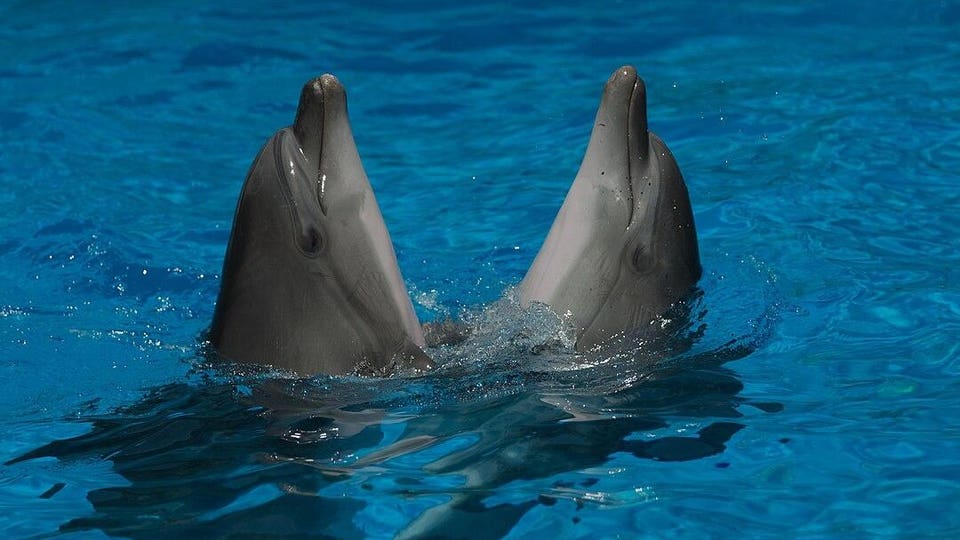David Axe Forbes Staff I write about ships, planes, tanks, drones, missiles and satellites. Following Click to save this article. You’ll be asked to sign into your Forbes account.
Got it Nov 29, 2023, 06:33pm EST Share to Facebook Share to Twitter Share to Linkedin Two Black Sea bottlenose dolphins. Wikimedia Commons A powerful storm swept across the Black Sea on Sunday and Monday. The wind and waves battered ships, flooded coastal settlements and inundated some military positions.
The storm also breached the pens, in Sevastopol harbor in occupied Crimea, where the Russian navy kept its specially-trained dolphins. H. I.
Sutton, a journalist and open-source intelligence analyst, was among the first to identify the breach—by scouring recent satellite imagery. Maybe the dolphins escaped; maybe they didn’t . What we know for sure is the pens no longer are intact.
“I am 100-percent confident that the dolphin pens have gone,” Sutton stated . As the late science-fiction writer Douglas Adams wrote, “So long and thanks for all the fish. ” Maybe.
Many of the world’s bigger navies train dolphins and whales for special naval tasks: retrieving items from the seafloor, locating mines and defending ships from enemy divers. The Russian navy’s militarized cetaceans include warm-water bottlenose dolphins and cold-water belugas. In 2019, a beluga wearing a harness labeled “Equipment St.
Petersburg” appeared in Norwegian waters, far from his species’ normal Arctic habitat, after apparently escaping a Russian enclosure. Norwegian biologists named the beluga Hvaldimir. They since have tracked him swimming south toward Sweden.
“It could be that he’s searching for other beluga whales,” Sebastian Strand, a marine biologist with the OneWhale organization, told The Guardian . Tragically, Hvaldimir is swimming in the wrong direction to meet another member of his species. The Russian Black Sea Fleet first deployed bottlenose dolphins in Sevastopol back in 2018, apparently as a defense against Ukrainian saboteurs.
While the Ukrainians repeatedly have struck Russian ships in Sevastopol in the 22 months since Russia widened its nine-year war on Ukraine, it’s not clear these attacks ever have involved divers. Or, for that matter, any undersea weapon. Yes, the Ukrainian navy is developing an explosives-laden, robotic mini-submarine for port raids.
But so far, Kyiv’s sea-denial campaign around Crimea strictly has involved aerial and surface drones, long-range rockets and cruise missiles. If the Sevastopol dolphins indeed have escaped and don’t return, they may do just fine in their new home. The Black Sea is home to a subspecies of bottlenose dolphins as well as other cetaceans.
But Russia’s war has been cruel to the native dolphins. Explosions, pollution and the overuse of loud active sonar all have taken a toll on the roughly 400,000 dolphins and porpoises who lived in the Black Sea prior to 2022. Hundreds, possibly thousands, of otherwise healthy cetaceans have died as a result of the war.
Follow me on Twitter . Check out my website or some of my other work here . Send me a secure tip .
David Axe Editorial Standards Print Reprints & Permissions.
From: forbescrypto
URL: https://www.forbes.com/sites/davidaxe/2023/11/29/so-long-and-thanks-for-all-the-fish-russias-naval-defense-dolphins-may-have-escaped/
